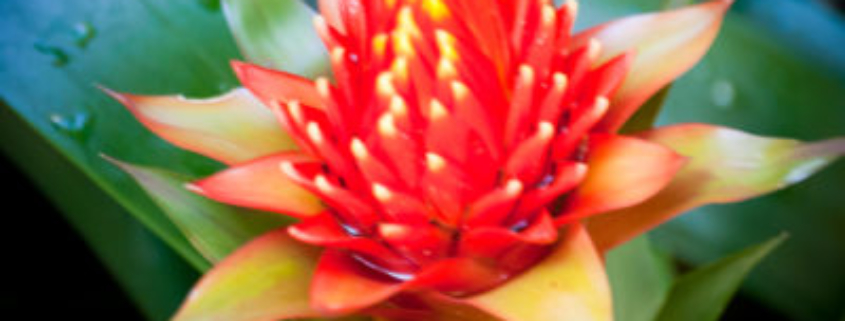A Picture Is Worth
As a young child, I stuttered. “Mom, wha-wha-wha-what time is it?” Many times she would answer, but sometimes she would interrupt me mid-sentence to say, “Marlenia! You need to stop and breathe before you talk.” If I had been part of a household in which we each patiently and politely spoke after someone placed a period behind their last word, this advice would have been of some use. But in my family, conversations were a loud medley of fluctuating cadences and emphatic declarations; a hail of noes, a scattershot of yeses, and a carnival of laughs. I longed to have a voice that commanded my family’s attention but many times, I sat mostly as the observer. There were only five of us including my mom, dad, and two older sisters, but sometimes the house sounded like a raucous comedy club. My mother’s trumpet-like “Ha Ha!” extends the last Ha for at least 15 seconds. My father has a quieter but hearty, “Ha!” that culminates with him placing his broad, walnut colored hand on his chest, leaning back singing a breathless, “Oooo. Oh Lord, oh Lord.” Their words and laughs collapsed on top of each other and battled for prime position Everyone struggled to be heard and yet somehow, everyone was understood.
I followed conversations with my eyes, and on rare occasion, would squeak my way into a family discussion for a few minutes. Being the resident observer, I began to appreciate the visual narrative that swirled around me. I watched the animated personalities express themselves with abandon. My middle sister’s hair swinging to a Billy Idol rock anthem, my oldest sister pointing her finger in the air to accentuate a point, my mom clapping her hands to a spirited gospel song, and my dad leaping from his recliner reenacting a dramatic tale from his youth. Even our beautiful, blue-eyed husky mix would bark and spin wildly in front of the door before slapping her paws on the knob to indicate she needed a bathroom break. My memory may fail to recall every word said but those vibrant images are solidly intact.
In 1983, when I was ten, my dad gave me my first camera, an off-brand black plastic box with metal trim surrounding the fixed lens, perfect for someone who was just learning photography. I was the casual, untrained snap shooter recklessly targeting any willing or unwilling subject within range of my viewfinder. After my dad demonstrated how to thread the Kodak film into the spool and advance the film by manually winding, I was ready for action. No subject was too boring for me. The bowl of wooden fruit on the coffee table, the aloe vera plant on the porch, and the hazy sky itself would serve as my muse. I began to find my voice without saying a word.
* * *
Hyde Park Elementary School was in South Central Los Angeles in the middle of the Westside Rollin 60’s Neighborhood Crip territory. The 60’s name wasn’t a nod to the civil rights era, the Beatles, or flower power. The name referenced a series of palm tree-lined avenues numbered 60th, 61st, and so on. The Rollin 60’s was one of the most notorious and largest gangs in California. Young black men with navy blue Dickies and bandanas would stroll down the street and flip fingers into an upside-down peace sign as a reminder to observers who they were and what “set” they represented. That dark industrial blue was as commonplace as the red stop signs and yellow police tape. The neighborhood was a prism of dysfunction and violence that turned innocent children with dreams into escape artists—always looking for the next book, movie, or field trip that would transport the mind into an alternate reality.
A tall chain link fence served as the divide between our playground and the gang’s. Trees lined the perimeter of the school, their brown trunks assaulted with blue spray paint. They were left permanently branded with “R 60s.” Unlike graffiti-littered walls that only required a fresh coat of paint, the stained trees remained stained. The vandalization of nature was never an image I wanted to memorialize on film or in my mind. Instead, I sought escape to a world that promised peace and unmarred beauty. The place all the travel magazines, airline commercials, and privileged people referred to: Paradise.
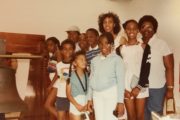
In fourth grade, I was one of a dozen students selected to be in Hyde Park’s newly formed program for gifted children—the Eagles. The first day, I received a royal blue nylon jacket with the school name and a canary yellow eagle on the back. We wore our jackets with pride. Suddenly we were a part of something special. We were pulled from class for instruction in advanced math, English and computer lab, where we mostly pretended to be nineteenth century wagon leaders in the game, Oregon Trail. One day before class ended, our teacher Ms. Woods announced we were going on a field trip—not to the zoo, beach, or museum. We were going to Honolulu, Hawaii. The 60’s could have their stained trees and dirty blocks. I was an Eagle and I was flying to Paradise.
Finally, after weeks of popcorn, pickle, and cookie sales at school, the Eagles had raised enough money to cover travel expenses. Worrying about the state of my thick, kinky curls only tamed with a scorching pressing comb, my mother paid for my hair to be braided in cornrows. Although the process was several hours long, the decorative white and gold beads that dangled from each braid were worth the time. Suddenly, my hair had swing, color, and sound as the beads collided into each other. My mom helped me pack a week’s worth of clothes and a pair of summer sandals in my dad’s gray garment bag. I stuffed my camera and Kodak film in my white flowered purse as I sang The Pointer Sisters’ hit song, “I’m So Excited.” Dancing around my bedroom I could only hear the song and the clicking of my hair as I shook my head back and forth. Silently, I lip synced in my mirror, “I’m so excited / and I just can’t hide it / I’m about to lose control / and I think I like it.”
* * *
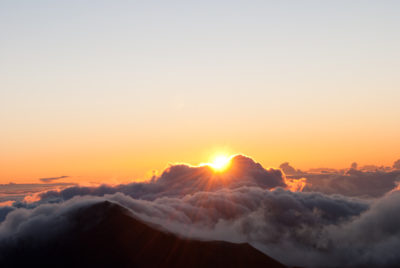 The first day, as my class explored the island, Hawaii’s natural features felt overwhelming. The air smelled wet and sweet. Morning mist dusted my beads and braids. The islanders called it “Pineapple Dew.” Diamond Head dominated the island’s skyline with 760 feet of jagged volcanic rock. At the ground level, Honolulu’s beaches were covered in white sand made damp by blue-green ocean water. The streets were lined with rainbow shower trees sprouting shades of yellow lemonade and orange sherbet. The knotty limbed ohia tree with its strawberry-red lehua blossoms reminded me of the giant pompoms decorating my sisters’ roller skates. The roadside chunks of pineapple lassoed my tongue with a swirl of sugary tanginess. Everything I heard about Hawaii was right. It was Paradise.
The first day, as my class explored the island, Hawaii’s natural features felt overwhelming. The air smelled wet and sweet. Morning mist dusted my beads and braids. The islanders called it “Pineapple Dew.” Diamond Head dominated the island’s skyline with 760 feet of jagged volcanic rock. At the ground level, Honolulu’s beaches were covered in white sand made damp by blue-green ocean water. The streets were lined with rainbow shower trees sprouting shades of yellow lemonade and orange sherbet. The knotty limbed ohia tree with its strawberry-red lehua blossoms reminded me of the giant pompoms decorating my sisters’ roller skates. The roadside chunks of pineapple lassoed my tongue with a swirl of sugary tanginess. Everything I heard about Hawaii was right. It was Paradise.
* * *
Towards the end of our week, we were guided on a shuttle boat to the USS Arizona Memorial—a 184-foot-long structure commemorating the sunken ship destroyed during Pearl Harbor. The boat slowly floated towards our destination. I placed my camera’s viewfinder to my eye and captured the long, flat, ghost white memorial. Click. Crank. Crank. Crank. I only had two packs of film, so each exposure had to count or else my photographic story would be incomplete. The line of seven oblong viewing holes in the memorial reminded me of the perforations on my film. Later I would learn that some of the first visitors said it looked like “a flattened milk carton.” The architect Alfred Preis countered his critics by noting how the sunken middle of the memorial represented the destruction from the strike, but the elevated ends symbolized America’s strength before and after the battle.
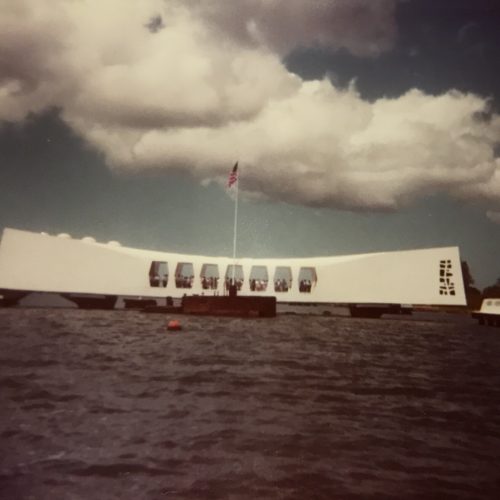 Our tour guide told us to look over the boat into the ocean. I was already transfixed by the glistening teal water. It made me wonder what tourists saw in the brownish-blue Pacific surrounding Los Angeles. While pointing into the deep blue, the guide announced, “On December 7, 1941, over 2,000 people lost their lives, and hundreds were injured in the bombing. If you look closely you will see there is oil on the surface from the sunken ship.” Japanese torpedoes, bullets and bombs had rained down on American battleships and planes. Above and below the surface were rusty remnants of military vessels. I squinted past the glare in the ocean and saw a puddle I would often see on the pavement after my dad moved a leaking car. It was a shiny translucent rainbow of oily swirls.
Our tour guide told us to look over the boat into the ocean. I was already transfixed by the glistening teal water. It made me wonder what tourists saw in the brownish-blue Pacific surrounding Los Angeles. While pointing into the deep blue, the guide announced, “On December 7, 1941, over 2,000 people lost their lives, and hundreds were injured in the bombing. If you look closely you will see there is oil on the surface from the sunken ship.” Japanese torpedoes, bullets and bombs had rained down on American battleships and planes. Above and below the surface were rusty remnants of military vessels. I squinted past the glare in the ocean and saw a puddle I would often see on the pavement after my dad moved a leaking car. It was a shiny translucent rainbow of oily swirls.
The wounded USS Arizona and pool of bleeding oil saddened me. Like the tarnished trees surrounding my elementary school, the battle scar sullied the naturally formed blue liquid canvas. I was over 2,500 miles away from South Central and yet I still stood in the middle of a battleground. The weaponry was not shanks, sawed-off shotguns, and Saturday night specials but the arsenal of powerful nations. Payback would not come in the form of a drive-by shooting or a back-alley beat down. America’s retribution would be the creation of the Atomic Bomb, with President Harry Truman stating, “The Japanese began the war from the air at Pearl Harbor. They have been repaid many fold.” Drops of oil seeped into the ocean. The tour guide called them the “tears of the Arizona” or “black tears.” What was I to make of these black tears? My shutter clicked. Crank. Crank. Crank. I took a stream of pictures at Pearl Harbor because as familiar as I was with the black tears shed in South Central, I couldn’t comprehend tears in Paradise.
The pictures would help me tell the story that would only nervously stumble off my tongue. When I returned home, I showed my family the freshly developed Kodak prints. The usual loud stories and guffaws were replaced with “oohs,” “ahhs” and a string of compliments that made me smile so much my cheeks hurt. I knew from that point on that photography would be one of the tools I used to tell a story when my words failed me. My escape to Paradise did not unearth perfection but it did uncover my voice.
As I look back on this time, I see a girl who assumed her only way to be heard was through what came out of her mouth. Paradise proved me wrong. There are many ways to be heard. My camera spoke for me when I could not speak for myself. Although I ultimately outgrew the stuttering and a strong voice eventually emerged, I continue to let my lens capture the image that is worth a thousand words and is heard by all.
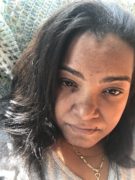 Marlenia Myers is an emerging writer and grants professional for a social services organization. She is currently a candidate for a dual degree in Creative Writing (MFA) and Urban Sustainability (MA) at Antioch University Los Angeles. In her spare time, she enjoys following the orders of her bossy (and cute) dachshund, Rocky.
Marlenia Myers is an emerging writer and grants professional for a social services organization. She is currently a candidate for a dual degree in Creative Writing (MFA) and Urban Sustainability (MA) at Antioch University Los Angeles. In her spare time, she enjoys following the orders of her bossy (and cute) dachshund, Rocky.

